Odilon Redon was central to the European art movement of the late 19th century known as the Symbolists. He was renowned for the dreamlike art he created that offered viewers a glimpse into the subconscious mind through imagery using vibrant color. Among his most celebrated works are his flower paintings, which subtly link nature and emotion. His paintings transform simple objects into profound representations of the human spirit.
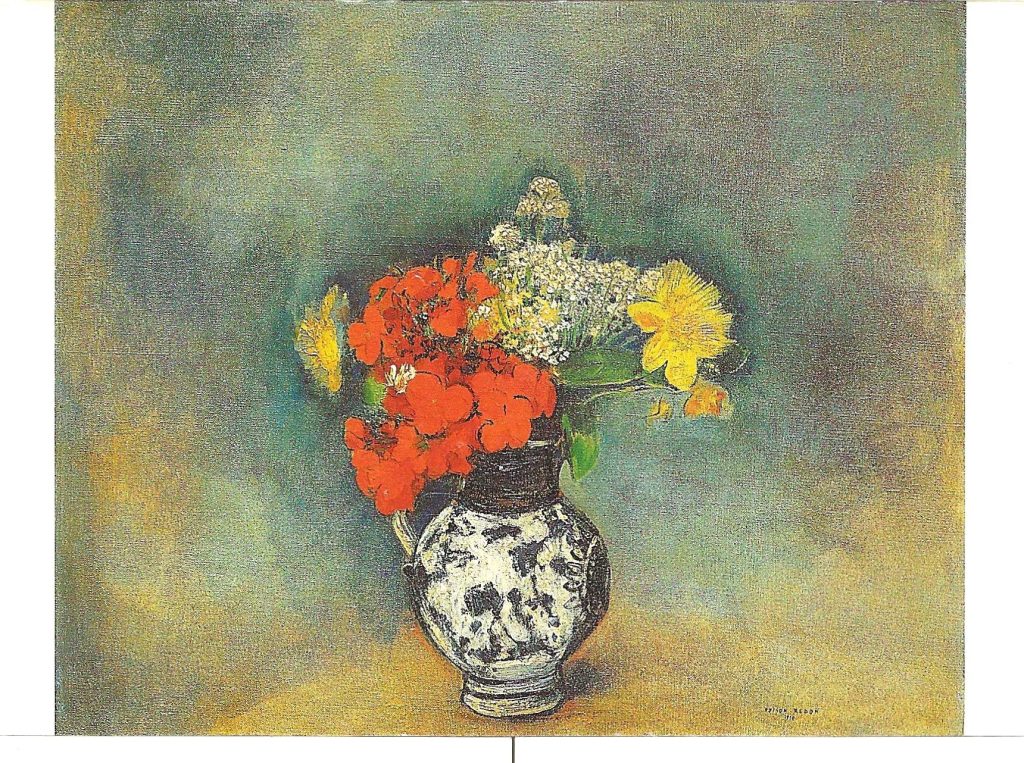
Redon was born in 1840 in Bordeaux, France, and his artistic journey began with lithography and charcoal drawings, where he experimented with all things surreal. It wasn’t until the late 1890s that he turned to color, producing mesmerizing paintings that would certify his legacy. His flower compositions, although grounded in reality, are infused with a true sense of mystery. They serve as expressions of his inner thoughts and feelings, concealing the deeper meanings behind their beauty.
In Redon’s floral paintings, flowers often transcend their botanical existence, representing emotions and dreams. For instance, in Three Vases of Flowers that he completed in 1910, he brings every color from the rainbow to a table for all to summon the delights of daytime and awareness. In Exotic Flowers in a Painted Pot the artist uses fewer colors which resemble the lessening of light at sunset and the mystery of the night. The contrast between light and dark in the two paintings can be interpreted as the duality of existence.
By using a palette that ranges from vibrant blues and reds to softer pastels, Redon drew viewers into his world where flowers were metaphors for the complexities of life.
The depth of Redon’s works was further enhanced by his distinctive technique. Unlike many of his contemporaries, who utilized precise outlines, Redon used a more spontaneous style. His brushwork was fluid, it evoked the natural movement of flowers in a breeze. In his floral works, the blossoms seem to dance on the canvas, capturing the nature of beauty and life itself.
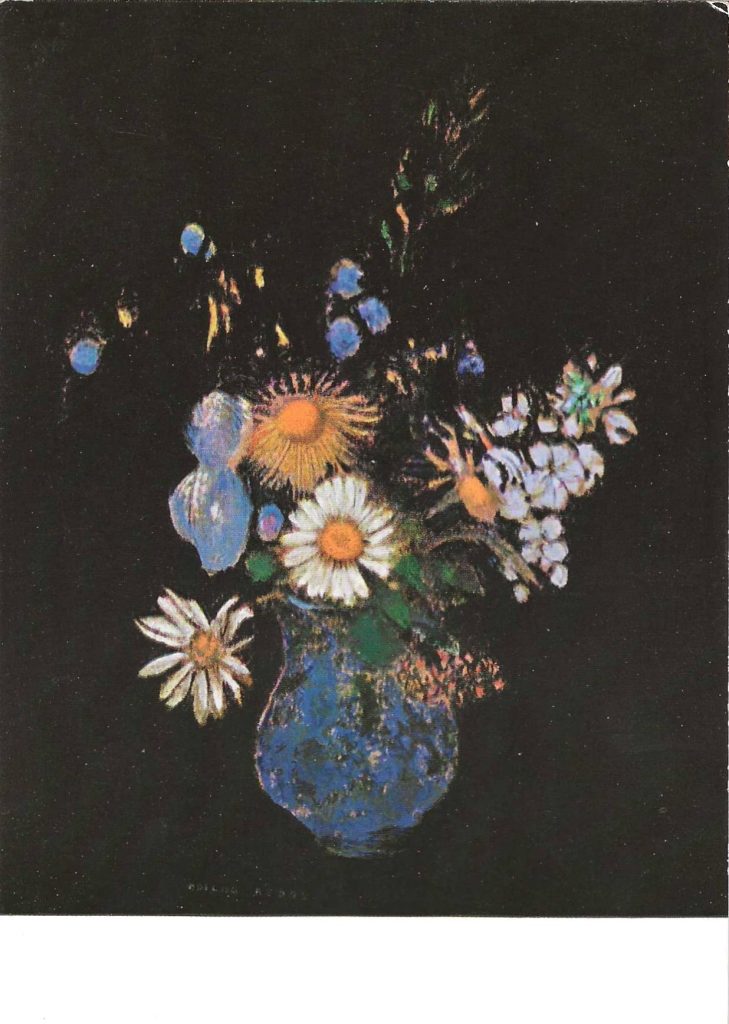
Redon’s exploration of color also played a significant role in his continued fascination with flowers for all times and life experiences. Colors in his works were often laden with meaning. Reds signified passion and vitality, while blues evoked tranquility and introspection. This thoughtful application of color enhanced the viewer’s experience, allowing them to engage not just visually, but emotionally. And, when the color turned to black, well, you guessed it – black is nonexistence or death.
Furthermore, Redon’s fascination with flowers reflected his broad interest in botany and the natural world.
One of the most intriguing aspects of Redon’s flower paintings is their ability to blur the border lines of reality. His flowers invoke a dreamlike quality which invites viewers into a surreal world where all kinds of life intersect. The symbolic nature of flowers often serves as a bridge to a world where fleeting beauty exists in both love and loss.
Odilon Redon’s flower paintings are proof of his unique vision as an artist. His pieces invite viewers into a world rich with symbolism and allows everyone an interpretation that flowers are more than they appear — they are symbols of deeper truths.
Redon died on July 6, 1916, in Paris in the middle of the Great War. He wasn’t immediately forgotten, but nearly was. At his death, several of his paintings were on-loan to museums across Europe and in the United States (in New York, Philadelphia, Chicago and Pittsburg) and Canada. Diligent research has never discovered how those exhibits resolved except that Redon’s last sale, before his death, of any of his “Flowers” was by the Albright Art Museum in Buffalo, New York, in April 1916. There is one additional reference concerning one Redon painting that was in a collection purchased by the Detroit Art Museum in October 1916.
* * *
One interesting fact about these postcards. The artist died in 1916, yet these (the only postcards I have ever seen of Redon’s work) were published in 1961 – 45 years after his passing. This fact alone makes me wonder, “Why?”
GRL
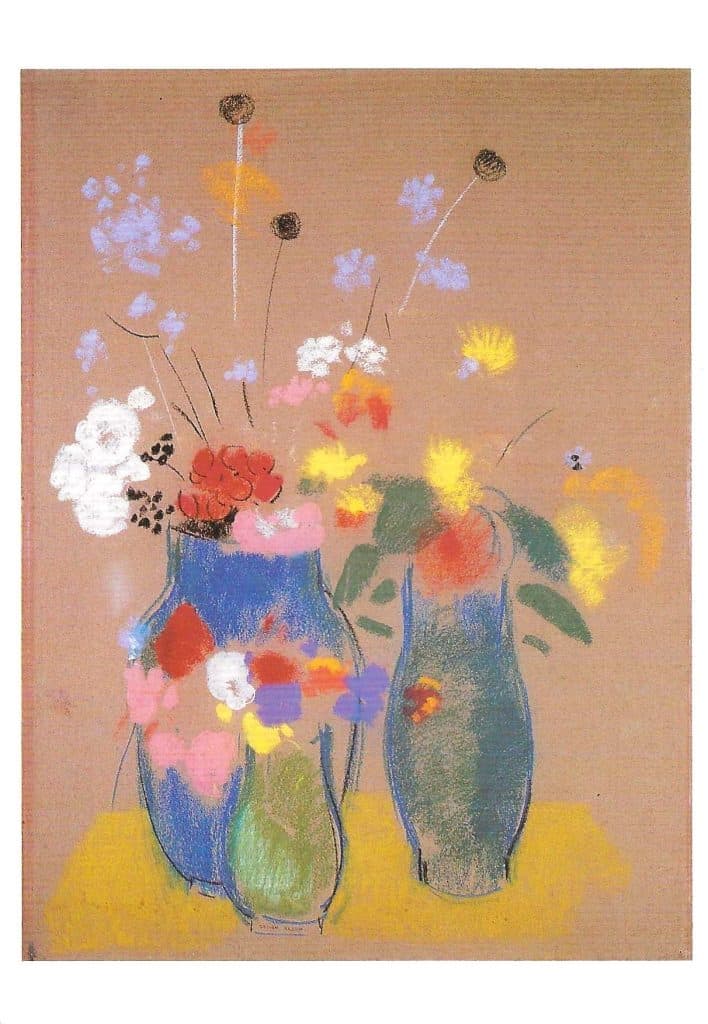
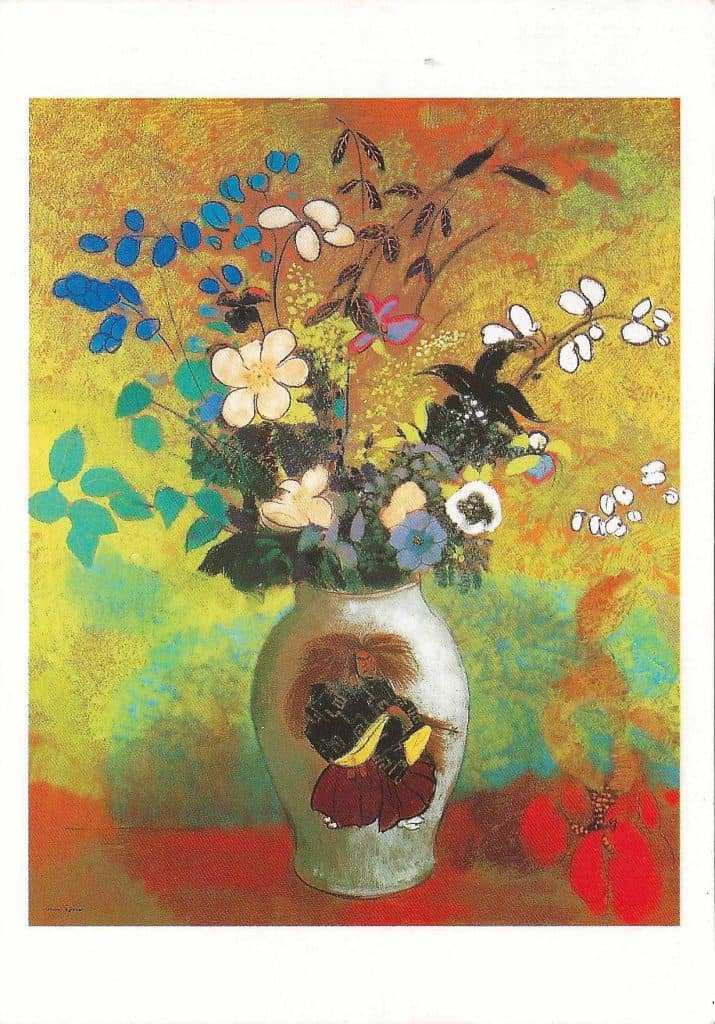
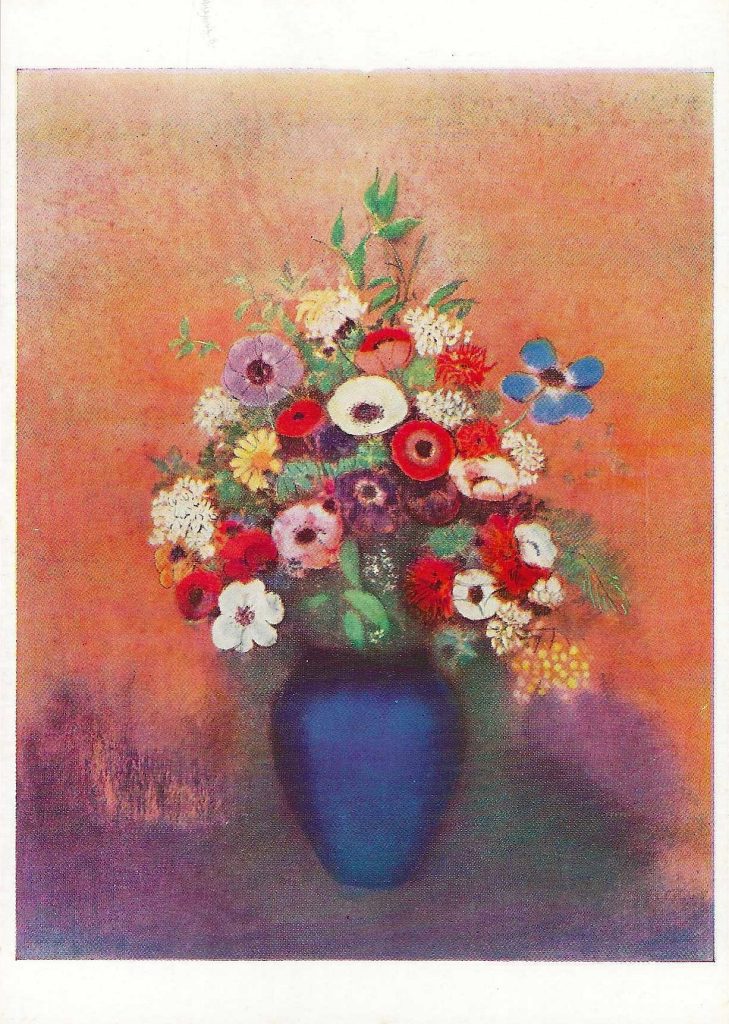
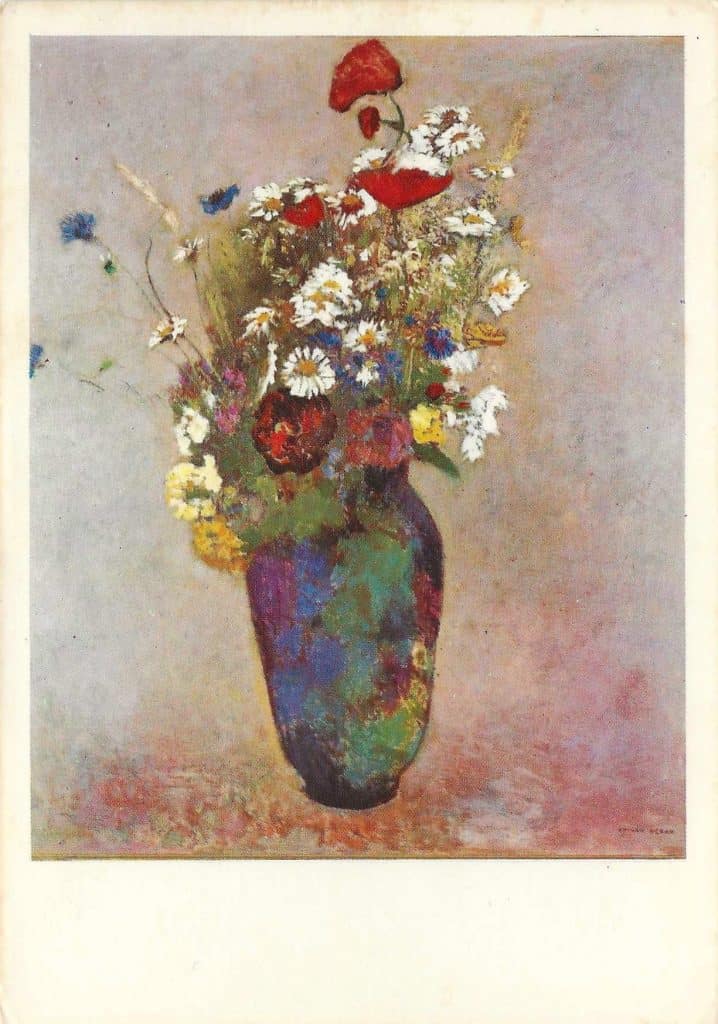
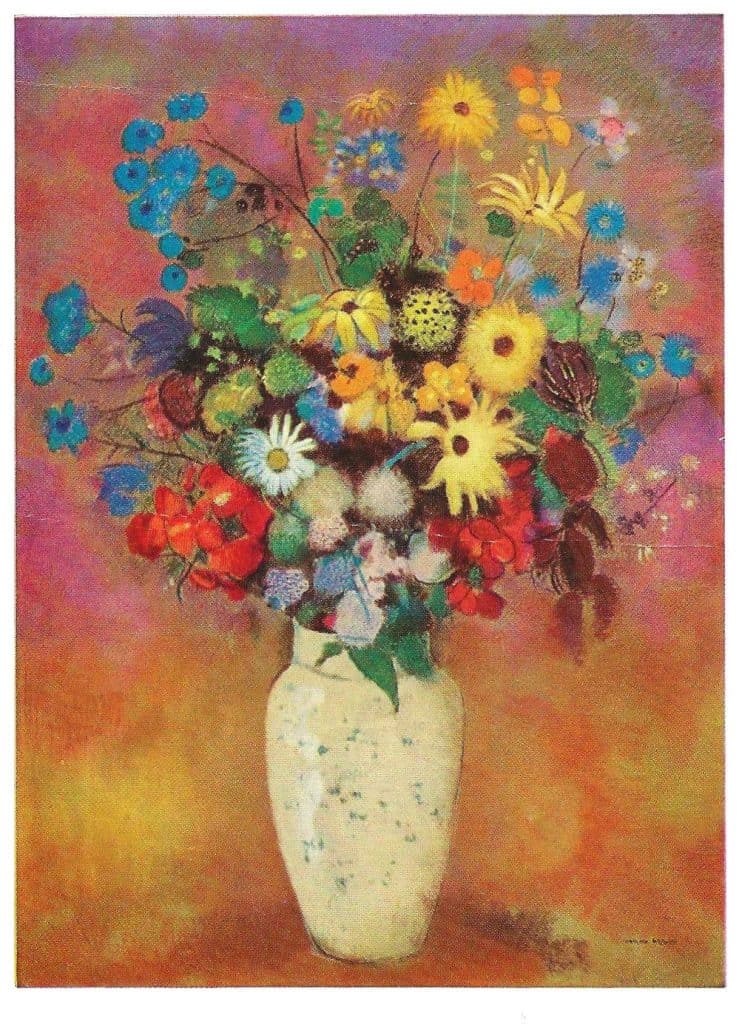
Redon was also known for paintings of the Buddha.
The last question is intriguing. I’d be curious about the duration of copyright in the years that these painting were created which were quite different from current laws. Many publishers seek out marketable works on which the copyright has expired because works that can legally be reproduced without the necessity of seeking permission from the artist or the artist’s estate and paying a fee are less expensive to produce.